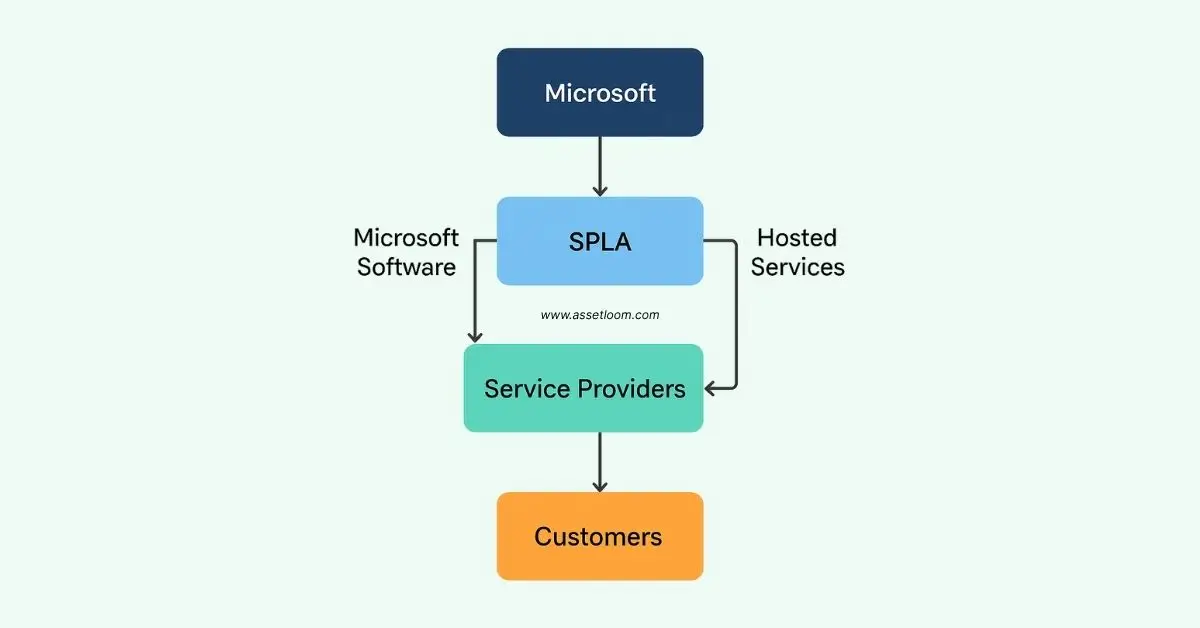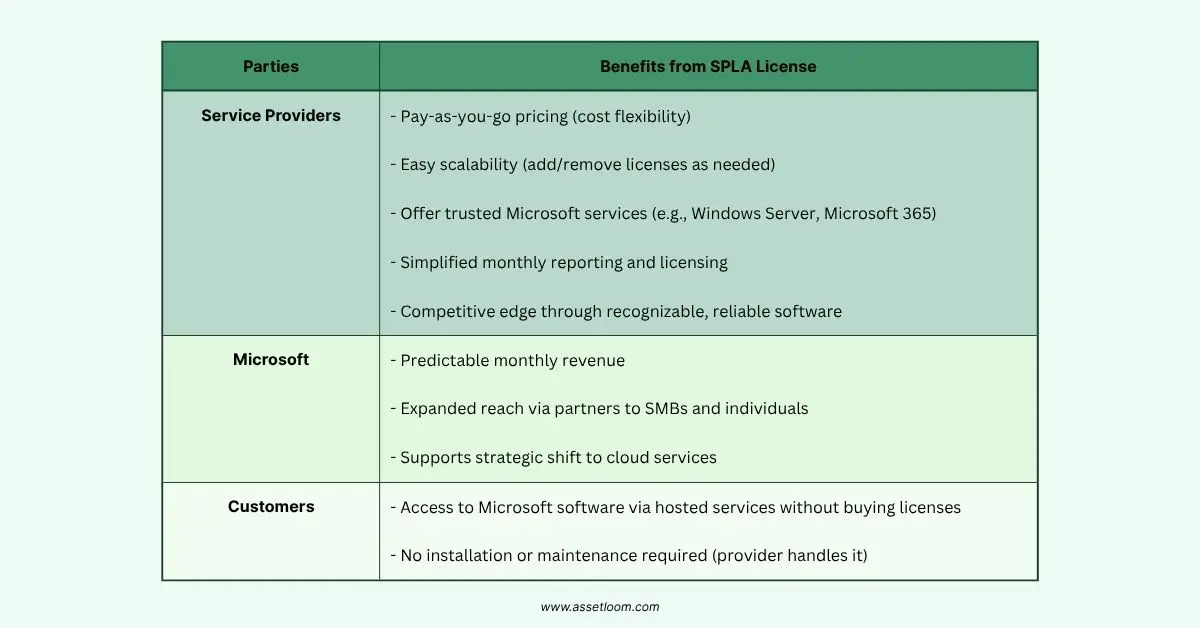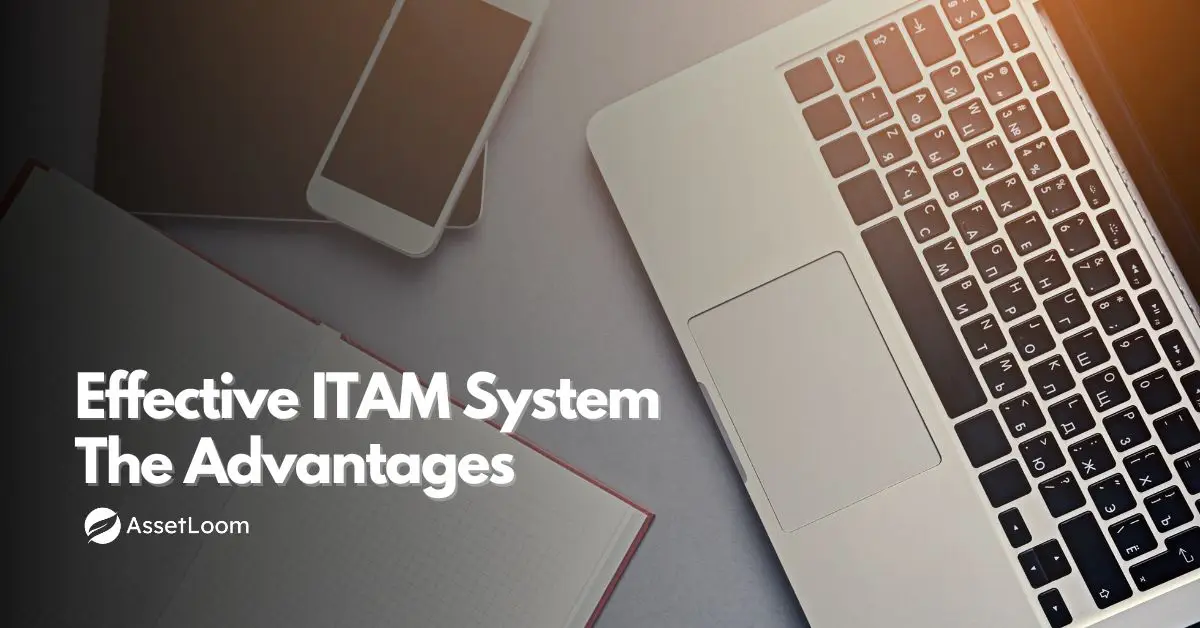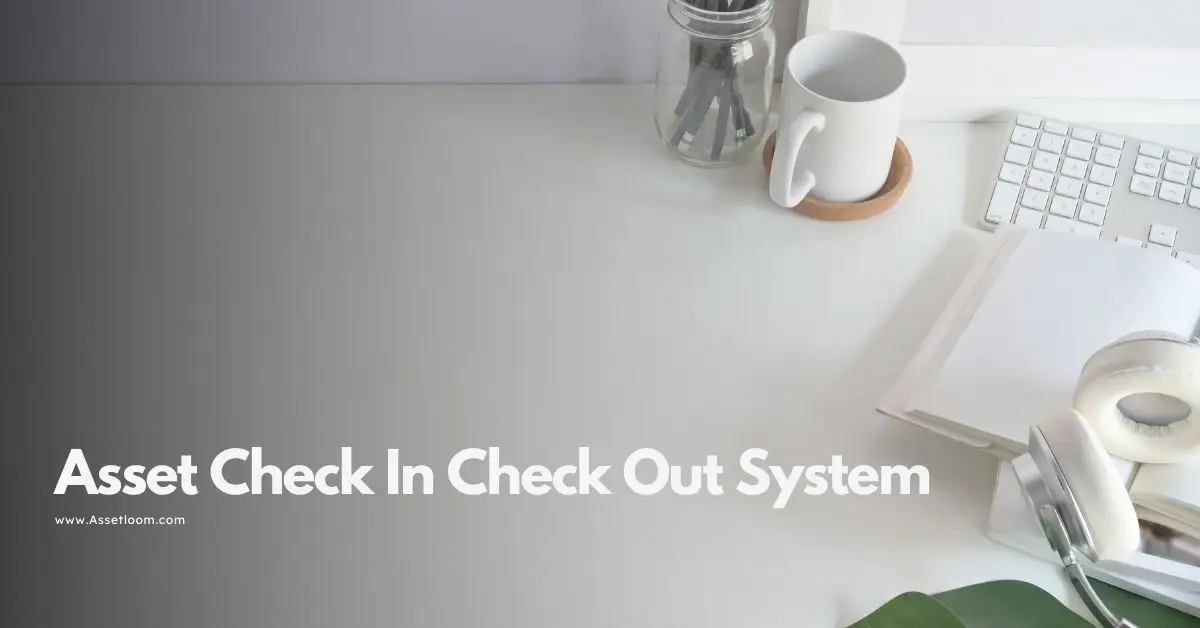Understanding SPLA License
Discover the SPLA License - Microsoft’s flexible licensing for service providers offering cloud-based services like web hosting & apps.
The SPLA License, or Service Provider License Agreement, is Microsoft’s way of helping businesses like web hosts, cloud providers, or app developers offer their customers top-notch services using Microsoft software. In this article, we’ll explore what an SPLA license is, its benefits, how it works, and how you can get one.
What Is an SPLA License?
An SPLA license is a special agreement from Microsoft that lets businesses, called service providers, use Microsoft software to offer services to their customers. Instead of buying software like Windows Server, Microsoft Office, or SQL Server outright, service providers “rent” it from Microsoft on a monthly basis. This allows them to provide things like cloud-based apps, web hosting, or virtual servers without the huge upfront costs of traditional software licenses.
Related article: The Importance of Software License Management for Businesses
For example, companies like GoDaddy or Rackspace might use an SPLA license to offer Microsoft 365 or Windows-based web hosting. You, the customer, get to use Microsoft software without buying it yourself, and the provider pays Microsoft based on how much their customers use.

Why Does the SPLA License Matter?
The SPLA license is designed for businesses that want to offer software-as-a-service (SaaS), infrastructure-as-a-service (IaaS), or other hosted solutions. It’s different from buying a retail copy of Microsoft Office for your laptop because it’s built for companies serving lots of users, often through the cloud. This makes it a key tool for businesses in web hosting, IT services, or app development.
Related article: What Is SaaS License Management? How It Helps You Avoid Looming Risk
Benefits of the Service Provider License Agreement
The SPLA license is a win-win for both service providers and Microsoft, and it comes with some serious perks. Let’s break down what it offers for businesses and why it’s such a big deal.

For Service Providers
- Cost Flexibility: Instead of dropping thousands of dollars to buy Microsoft software, providers pay only for what their customers use each month.
- Scalability: Got more customers this month? Add more licenses. Business slowing down? Reduce them. The SPLA license lets providers scale up or down without being stuck with unused software.
- Offer Popular Services: Providers can use trusted Microsoft products like Windows Server, SQL Server, or Microsoft 365 to create services customers already know and love. This makes it easier to attract clients without building software from scratch.
- Simplified Licensing: Managing licenses for hundreds of users can be a headache. With SPLA, providers deal with one agreement and report usage monthly, keeping things straightforward.
- Competitive Edge: Offering Microsoft-based services (like cloud-hosted Office) helps providers stand out in a crowded market. Customers trust Microsoft, so providers gain credibility.
For Microsoft
- Steady Revenue: Microsoft gets monthly payments from providers, creating a reliable income stream.
- Wider Reach: Through service providers, Microsoft’s software reaches small businesses or individuals who might not buy licenses directly, growing their market.
- Cloud Focus: The SPLA license supports Microsoft’s push into cloud computing, helping them stay competitive in the era of cloud services.
For Customers
While not the focus, customers benefit too! You get access to Microsoft software through user-friendly services (like online apps or hosted servers) without needing to buy or install anything yourself.
How Does SPLA Licensing Work?
So, how does the SPLA license actually function? Let’s walk through it step-by-step in a way that’s easy to follow.
- Sign the Agreement: A service provider signs an SPLA license agreement with Microsoft, agreeing to follow their rules and report usage.
- Choose Microsoft Products: The provider selects which Microsoft software they want to use, like Windows Server for hosting websites, SQL Server for databases, or Microsoft 365 for cloud-based apps.
- Deliver Services: The provider sets up the software on their servers or cloud platform and offers services to customers. For example, they might host an online version of Microsoft Word or run a virtual server for a business.
- Track Usage: Each month, the provider tracks how many users or devices accessed the software. This could be based on the number of users (e.g., people using Microsoft 365) or processors (e.g., for server software).
- Report and Pay: The provider submits a report to Microsoft detailing usage and pays a fee based on that usage. It’s a pay-as-you-go model, so costs vary month to month.
- Stay Compliant: Providers must follow Microsoft’s rules, like ensuring the software is only used for customer services (not their own internal use, unless specified) and keeping accurate records.
For example, if a company like IONOS hosts websites on Windows Server, they use an SPLA license to pay Microsoft based on how many servers or customers use it each month. This flexibility is what makes SPLA so appealing for businesses offering hosted services.
How to Get a Service Provider License?
Ready to explore getting an SPLA license for your business? Here’s what you need to know to get started, explained simply.
-
Understand Your Business Needs:
- Are you planning to offer hosted services like web hosting, cloud apps, or IT solutions? The SPLA license is for businesses that provide software or infrastructure services to customers, not for internal use.
- Examples: Hosting websites on Windows Server, offering Microsoft 365 through your platform, or running virtual machines for clients.
-
Contact a Microsoft Partner or Distributor:
- You can’t just sign up for an SPLA license directly on Microsoft’s website. You’ll need to work with an authorized Microsoft distributor or reseller, like Ingram Micro, Tech Data, or Crayon.
- These partners help you understand the agreement, pricing, and requirements. They’ll guide you through the process and provide support.
-
Meet Eligibility Requirements:
- Microsoft requires that you’re a legitimate service provider offering hosted services to third parties (not just using the software for your own company).
- You’ll need to provide business details, like your company’s legal status and contact information.
-
Sign the SPLA Agreement:
- The agreement outlines your responsibilities, like reporting usage monthly, paying fees, and following Microsoft’s licensing rules.
- You’ll also need a Microsoft Partner Network ID, which you can get through the sign-up process if you don’t already have one.
-
Set Up Infrastructure:
- You’ll need the technical setup (like servers or cloud platforms) to host Microsoft software and deliver services to customers.
- For example, if you’re offering cloud-based Microsoft Office, you’ll need a platform to host it securely.
-
Start Offering Services and Report Usage:
- Once approved, you can start using Microsoft software to provide services. Each month, you’ll report usage to Microsoft through your distributor and pay the licensing fees.
Final Thoughts
The SPLA License is a powerful tool for businesses looking to offer Microsoft-based services without the high costs of traditional licensing. For service providers, it offers flexibility, scalability, and a competitive edge. For Microsoft, it’s a way to expand their reach and keep their software at the heart of the cloud era.
Frequently Asked Questions
What is an SPLA license?
An SPLA license (Service Provider License Agreement) is a Microsoft program that lets service providers rent Microsoft software monthly to offer hosted services like cloud apps, web hosting, or virtual servers to customers.
Q: Who can use an SPLA license?
Businesses that provide hosted services, like web hosting companies (e.g., GoDaddy) or cloud providers (e.g., Rackspace), can use an SPLA license. It’s not for internal company use unless specified.
Q: How is SPLA different from buying Microsoft software?
Buying software (like Office) is a one-time purchase for personal use. An SPLA license lets providers rent software to host services for multiple customers, paying Microsoft monthly based on usage.
Q: How much does an SPLA license cost?
Costs vary based on how many users or devices access the software each month. Contact a Microsoft distributor like Ingram Micro for pricing details specific to your business.
Q: Can I offer Microsoft 365 with an SPLA license?
Yes! Providers can use an SPLA license to offer Microsoft 365 or other products as hosted services, like online versions of Word or Outlook.
Related article: How SharePoint Powers Microsoft IT Asset Management?
Q: How do I get started with an SPLA license?
Contact an authorized Microsoft distributor (e.g., Tech Data or Crayon), confirm you’re a service provider, sign the agreement, and set up your infrastructure to host services.

Subscribe for Expert Tips and Updates
Receive the latest news from AssetLoom. right in your inbox


